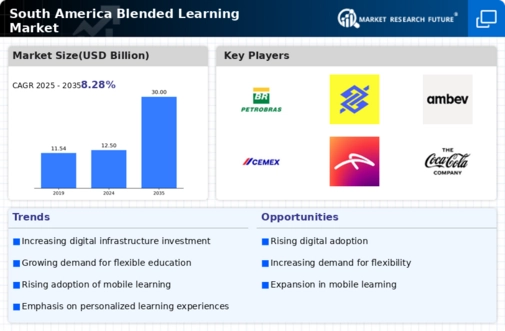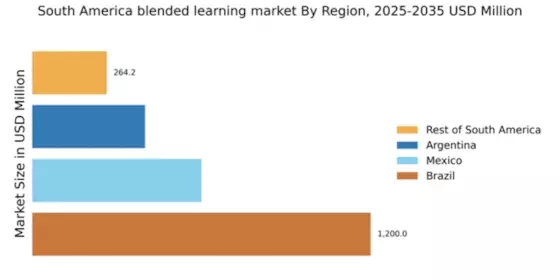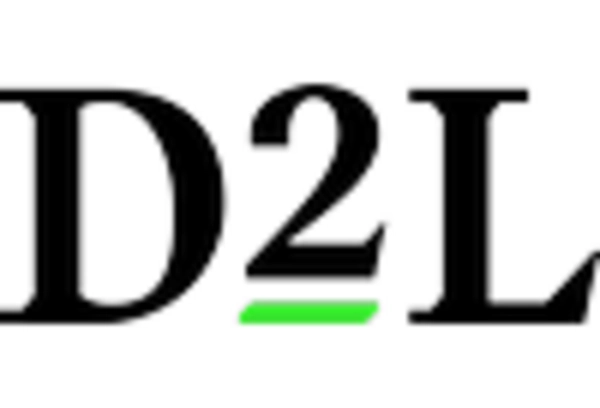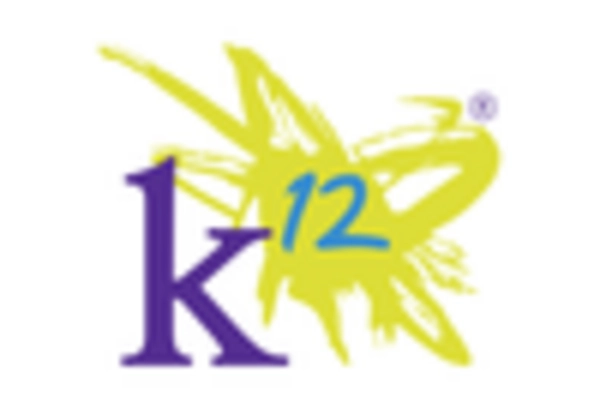Expansion of Internet Accessibility
In South America, the expansion of internet accessibility plays a crucial role in shaping the blended learning market. With ongoing investments in digital infrastructure, more individuals gain access to reliable internet services, particularly in rural and underserved areas. Recent statistics suggest that internet penetration in South America has reached approximately 75%, facilitating greater participation in online learning initiatives. This increased connectivity enables educational institutions to implement blended learning models effectively, allowing students to engage with digital content and resources seamlessly. As internet accessibility continues to improve, the blended learning market is poised for growth, as more learners can participate in hybrid educational experiences that combine traditional and digital methodologies.
Growing Emphasis on Lifelong Learning
The blended learning market in South America is significantly influenced by the growing emphasis on lifelong learning. As the job market evolves, individuals increasingly recognize the importance of continuous education and skill development. This trend is reflected in the rising enrollment rates in adult education programs and professional development courses that utilize blended learning approaches. Recent data indicates that approximately 40% of working adults in South America are pursuing additional qualifications through blended learning formats. This shift not only enhances workforce skills but also drives demand for innovative educational solutions. Consequently, the blended learning market is likely to expand as institutions cater to the needs of lifelong learners seeking flexible and accessible learning opportunities.
Rising Demand for Flexible Learning Solutions
The blended learning market in South America experiences a notable surge in demand for flexible learning solutions. This trend is driven by the increasing need for educational institutions to accommodate diverse learning styles and schedules. As students seek more control over their learning environments, blended learning models that combine online and face-to-face instruction become increasingly appealing. According to recent data, approximately 65% of students in South America express a preference for learning formats that allow for flexibility. This shift indicates a significant opportunity for educational providers to innovate and adapt their offerings, thereby enhancing the overall learning experience. The blended learning market is likely to benefit from this growing demand, as institutions strive to meet the evolving expectations of learners.
Rising Interest in Gamification and Interactive Learning
The blended learning market in South America is increasingly characterized by a rising interest in gamification and interactive learning strategies. Educational institutions are recognizing the potential of these approaches to enhance student engagement and motivation. By integrating game-like elements into blended learning environments, educators can create more dynamic and interactive experiences for learners. Recent studies suggest that approximately 70% of students in South America respond positively to gamified learning experiences, indicating a strong preference for interactive content. This trend suggests that the blended learning market may continue to evolve as institutions adopt innovative teaching methods that cater to the preferences of modern learners, ultimately leading to improved educational outcomes.
Increased Collaboration Between Educational Institutions and Corporations
The blended learning market in South America benefits from increased collaboration between educational institutions and corporations. As businesses seek to enhance employee training and development, partnerships with educational providers become more prevalent. These collaborations often result in the creation of tailored blended learning programs that address specific industry needs. Recent surveys indicate that approximately 55% of companies in South America are investing in partnerships with educational institutions to develop customized training solutions. This trend not only enhances the relevance of educational offerings but also fosters a more skilled workforce. As a result, the blended learning market is likely to see growth driven by these strategic alliances that align educational outcomes with labor market demands.


















Leave a Comment